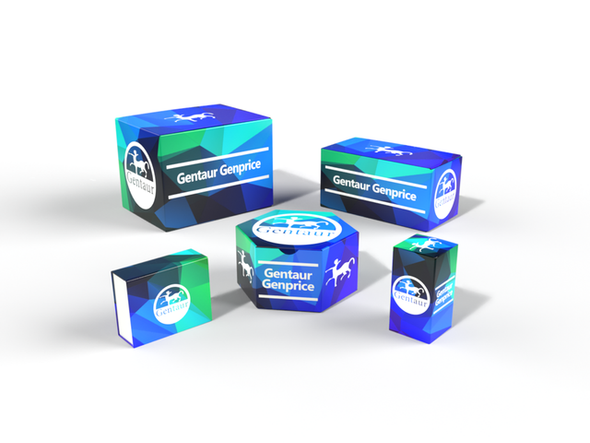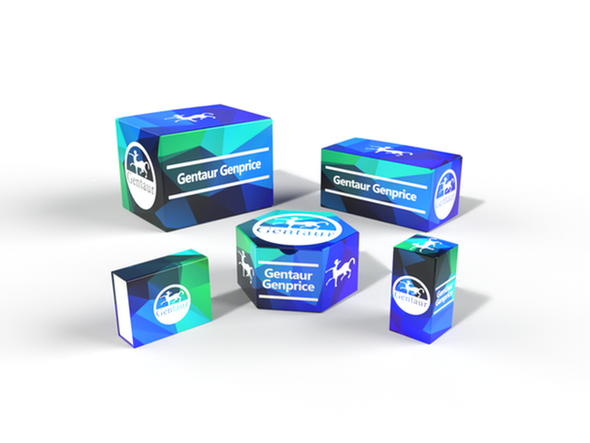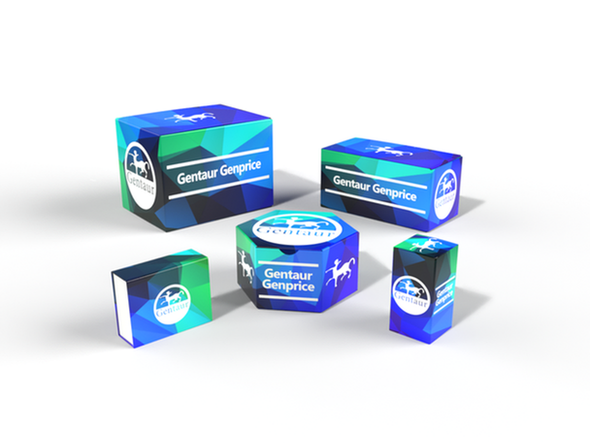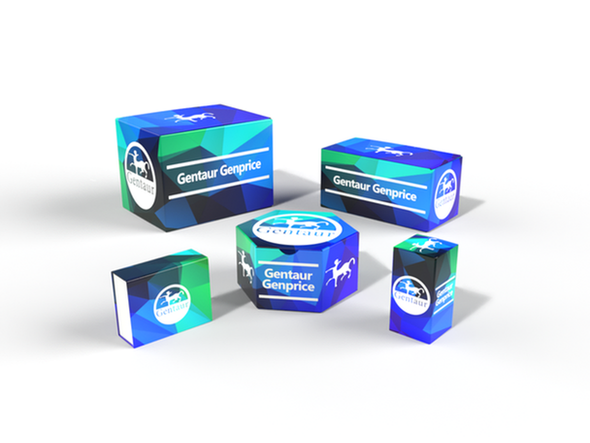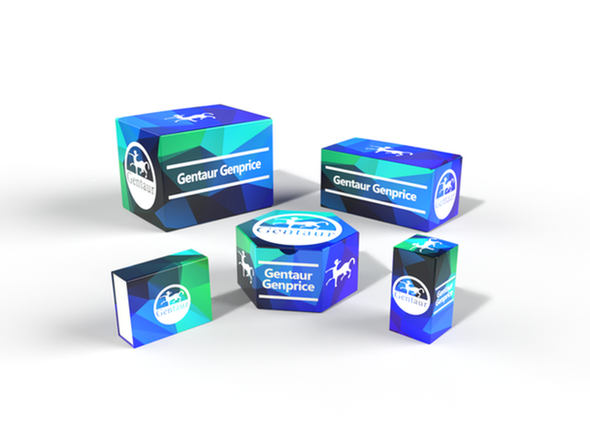749
Rat Fibrinogen (Fbg) ELISA Kit | KTE100968
- SKU:
- 749-KTE100968
- Availability:
- Usually ships in 5 working days
Description
Rat Fibrinogen (Fbg) ELISA Kit | KTE100968 | Gentaur UK, US & Europe Distribution
Application: This Rat Fibrinogen (Fbg) ELISA Kit employs a two-site sandwich ELISA to quantitate Fbg in samples. An antibody specific for Fbg has been pre-coated onto a microplate. Standards and samples are pipetted into the wells and anyFbg present is bound by the immobilized antibody. After removing any unbound substances, a biotin-conjugated antibody specific for Fbg is added to the wells. After washing, Streptavidin conjugated Horseradish Peroxidase (HRP) is added to the wells. Following a wash to remove any unbound avidin-enzyme reagent, a substrate solution is added to the wells and color develops in proportion to the amount of Fbg bound in the initial step. The color development is stopped and the intensity of the color is measured.
Detection Method: Colorimetric
Conjugate: N/A
Sample Type: Cell culture supernatants#Serum#Plasma#Other biological fluids
Assay Type: Multiple steps standard sandwich ELISA assay with a working time of 3-5 hours. It depends on the experience of the operation person.
Kit Component: • Rat Fibrinogen microplate
• Rat Fibrinogen standard
• Rat Fibrinogen detect antibody
• Streptavidin-HRP
• Standard diluent
• Assay buffer
• HRP substrate
• Stop solution
• Wash buffer
• Plate covers
Features & Benefits: Rat Fibrinogen (Fbg) ELISA Kit has high sensitivity and excellent specificity for detection of Rat Fbg. No significant cross-reactivity or interference between Rat Fbg and analogues was observed.
Calibration Range: Please inquire
Limit Of Detection: Please inquire
Usage Note: • Do not mix components from different kit lots or use reagents beyond the kit expiration date.
• Allow all reagents to warm to room temperature for at least 30 minutes before opening.
• Pre-rinse the pipet tip with reagent, use fresh pipet tips for each sample, standard and reagent to avoid contamination.
• Unused wells must be kept desiccated at 4 °C in the sealed bag provided.
• Mix Thoroughly is very important for the result. It is recommended using low frequency oscillator or slight hand shaking every 10 minutes.
• It is recommended that all samples and standards be assayed in duplicate or triplicate.
Storage Instruction: The unopened kit should be stored at 2 - 8°C. After opening, please store refer to protocols.
Shipping: Gel pack with blue ice.
Precaution The product listed herein is for research use only and is not intended for use in human or clinical diagnosis. Suggested applications of our products are not recommendations to use our products in violation of any patent or as a license. We cannot be responsible for patent infringements or other violations that may occur with the use of this product.
Background: Fibrinogen is an abundant plasma protein (5-10uM) produced in the liver. The intact protein has a MW of 340kD. It is composed of 3 pairs of disulfide-bound polypeptide chains named Aalpha, Bbeta and gamma. Fibrinogen is a triglobular protein consisting of a central E domain and terminal D domains. Proteolysis by thrombin results in release of Fibrinopeptide A followed by Fibrinopeptide B and the fibrin monomers that result polymerize in a half-overlap fashion to form insoluble fibrin fibrils. The chains of fibrin are referred to as alpha, beta and gamma, due to the removal of FPA and FPB. The polymerised fibrin is subsequently stabilized by the transglutaminase activated Factor XIII that forms amide linkages between gamma chains and, to a lesser extent, alpha chains of the fibrin molecules. Proteolysis of fibrinogen by plasmin initially liberates C-terminal residues from the Aalpha chain to produce fragment X.
Alternative Names: Fbg
Search name: Fbg
Tag: Fbg




